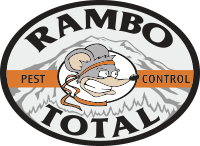NEED HELP? WE’RE AVAILABLE. CALL NOW. (253) 848 – 6000
NEED HELP? WE’RE AVAILABLE. CALL NOW.
(253) 848 – 6000
Ant Control & Prevention
Ants are a very common pest in and around homes and businesses in the Puget Sound region of Washington. The foraging ants you see represent about 10% of the colony; they gather all the food and moisture requirements for the remaining 90% of ants that never leave the nest!
Our ant control program is multi-faceted in its approach, working to simultaneously remove active infestations and eliminate conducive conditions to prevent future infestations.
Professional Ant Control Services
Though they may not seem as dangerous as other pests, an ant infestation can pose many issues if left unchecked. At best, they can be an inconvenient nuisance and contaminate food supplies. At worst, they can cause serious structural damage to your property. Fortunately, our pest control packages provide unrivaled protection against ant infestations.
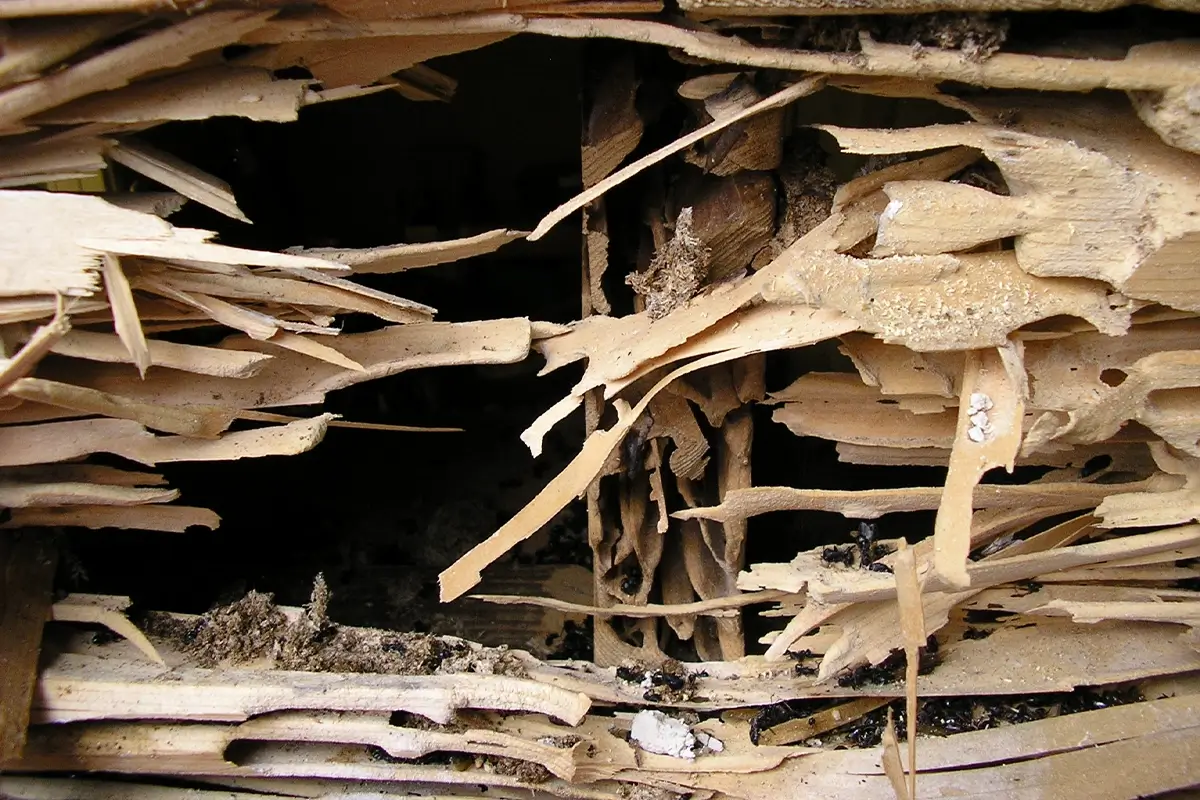
The Dangers of Ant Infestations
Ants are among the most prevalent insect invaders in Western Washington. Wherever they roam, they leave behind a pheromone trail guiding their colony’s movements. Their dietary preferences can vary seasonally, influenced by the colony’s developmental stage and environmental conditions.
Ants run the gamut from being minor nuisances to incredibly destructive pests. While species such as the aptly named odorous house ants are an unpleasant smelling annoyance that can contaminate food, they do not pose any serious health risks or damage to your property. Carpenter ants on the other hand can cause substantial structural damage to your property.
Some of the common traits among ants are:
Ant Identification
Washington is home to a wide variety of different ant species, all with different physical and behavioral characteristics:
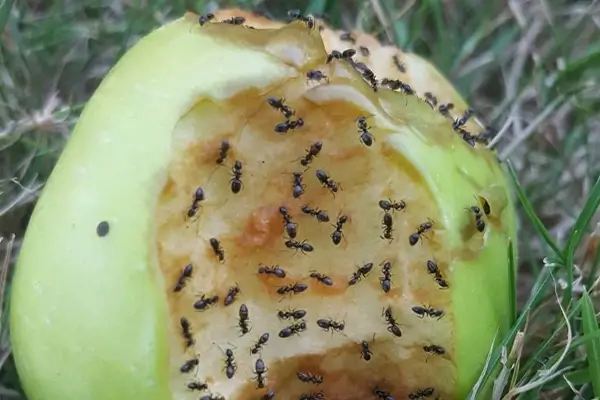
Odorous House Ants
Over the past number of years, odorous house ants have emerged as one of the most common and challenging pests encountered in Western Washington. Also known as sugar ants, piss ants, or odiferous ants, these ants are different from others in several ways. The odorous house ant gets its name from an odorous fluid they produce to fend off other insects. When the ants are crushed, a unique odor becomes detectable; some describe the smell as rotten coconut, others say it smells like ammonia.
They are polygenic (multiple queens within one colony), which allows them to grow their colonies at an incredible rate; a single colony can have as many as 10,000 workers. These colonies can be built in almost any environment: the leaf pile in your backyard, the junk drawer in your kitchen, or inside the insulation found in your walls. They are also nomadic, capable of moving their entire colony from place to place in search of food and shelter.
Odorous house ants also possess a powerful defense mechanism called budding. Whenever the colony feels they are in danger they shatter the main colony into numerous smaller colonies. Odorous House Ants are polygynous, meaning that a colony will have multiple queens. After a budding event occurs, each sub-colony will be able to operate independently with functioning queens and workers to continue their existence and procreation. Using any detectable DIY treatment chemical against them will trigger this budding. Many homeowners attempt DIY control measures before calling the pros. Some of the more common materials used before we arrive are window cleaners, over-the-counter bug spray, dish soap, essential oils, etc. Because of this, it is not uncommon for infestations to spread throughout the home before the homeowner realizes what is happening.
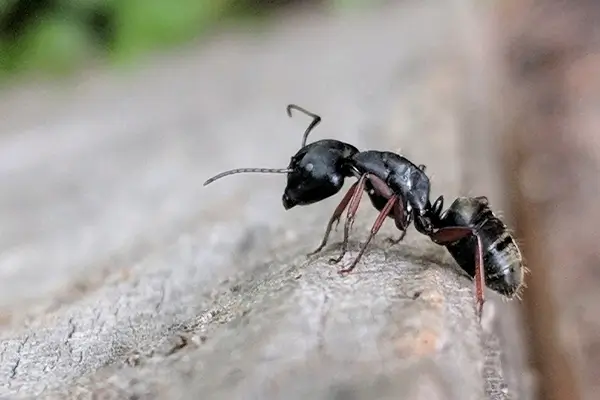
Carpenter Ants
Most ant species are only a nuisance to have around, but carpenter ants can pose a serious threat to a building. Carpenter ants are the most common and efficient wood-destroying insect in Western Washington. They are capable of hollowing out large portions of wood during the development of their nest.
Contrary to common belief, carpenter ants cannot digest the wood they burrow into; they are simply tunneling through it. This behavior helps to decompose fallen trees in the forest, but it is not welcome in our homes. It is not uncommon to find large mounds of sawdust-like material (called frass) near the wood they are tunneling through. Since Carpenter Ants do not ingest this material, they usually have a dumping ground where they drop the excavated material. This dumping ground is also where they dispose of dead nestmates and other waste from their nesting activities. Even though the ants themselves often are hidden from view inside their nest area, it is often very easy to positively identify carpenter ant frass due to this additional material, and once the frass is identified, we can usually locate the nest quickly.
The parent nest is almost always located outside in an area of constant moisture, like an old stump or fallen tree. However, they are capable of establishing large satellite colonies within structural wood beams, and these satellite colonies can be up to 300 feet away from the parent nest.
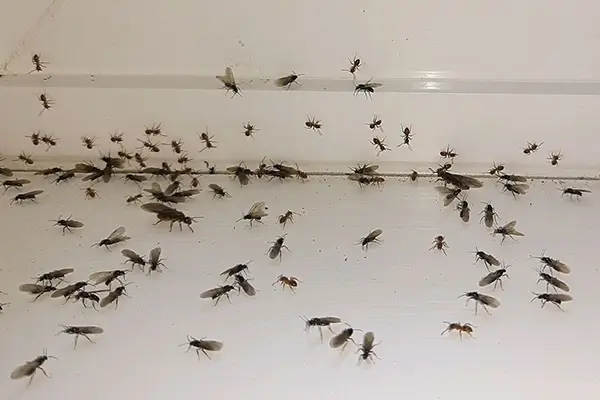
Moisture Ants
Moisture ants aid in the deterioration of water-damaged wood. Evidence of this invader is usually not found until the late summer when the reproductive alates swarm into living spaces, or a wall is opened for remodel or renovation work. Moisture ant colonies can number in the thousands and are often started by a single inseminated queen. In ideal conditions, colonies can survive for over 20 years, making them a long-term threat to a structure.
Moisture ants can only infest heavily saturated wood and have a primary diet of fungus caused by wood rot and decay. They speed up the decomposition of rotting wood by building elaborate three-dimensional galleries (similar in appearance to a sea sponge) which help retain and transfer moisture.
The prevention of moisture ants is fairly simple. Regularly inspect your home or business for conducive conditions such as pipe/drainage leaks or standing water in your crawlspace. When water conditions or water damage is discovered, have it corrected immediately. Without constant levels of high moisture, their colonies cannot survive.
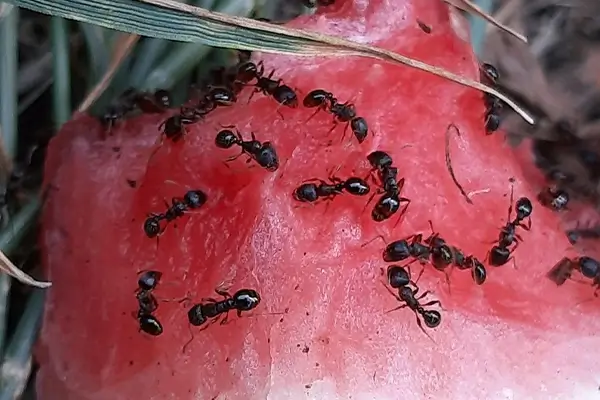
Pavement Ants
Pavement Ants are often found along the edges of a driveway or between paving stones. Their tell-tale piles of sand and dirt also indicate their presence. These ants are a structural nuisance and can invade homes or businesses – especially when the structure is built on a slab. Pavement ants are small, similar to odorous house ants, but can be identified by several unique characteristics when placed under a microscope, or with the naked eye if you know what to look for. All species of ants have either one or two “petiole nodes” between the thorax and abdomen. In our area we do not have many ants with two nodes, but pavement ants do. Another identifying characteristic is their heads are much more square-shaped than other small ants found in our area.
When you know what to look for, you are able to accurately identify a pest, and once the pest is identified, proper treatment can take place.
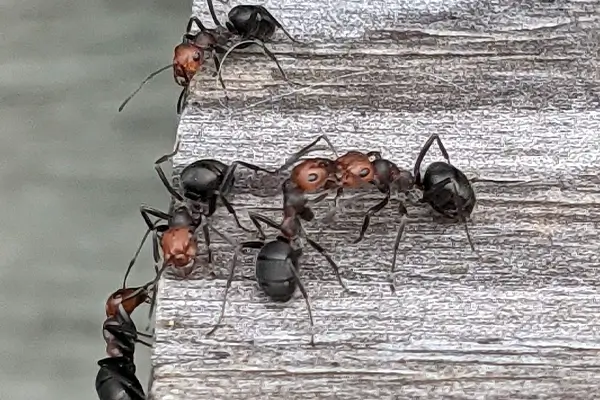
Thatching Ants
According to Wikipedia, the word “thatching” means “the craft of building a roof with dry vegetation… layering the vegetation so as to shed water away from the inner roof…” This is exactly what thatching ants do, but usually with tree needles. The evergreen trees of our area, such as fir or pine, allow for many such materials to be utilized in the building of these thatch nests. Thatching ants can build mounds of these materials, often 3 to 4 feet high, and they extend underground at least as far as they are tall.
These ants have elaborate tunnels throughout their thatch mounds and incorporate different chambers for the brood to mature. The foraging ants of these colonies travel great distances, and it is common to see busy foraging trails all over the yard. Treatment for these ants is usually best performed at the site of the colony or mound, but sometimes it is located on a neighboring property. Regardless of nest location, we have various treatment measures that can be incorporated to control whatever situation with which you are dealing.
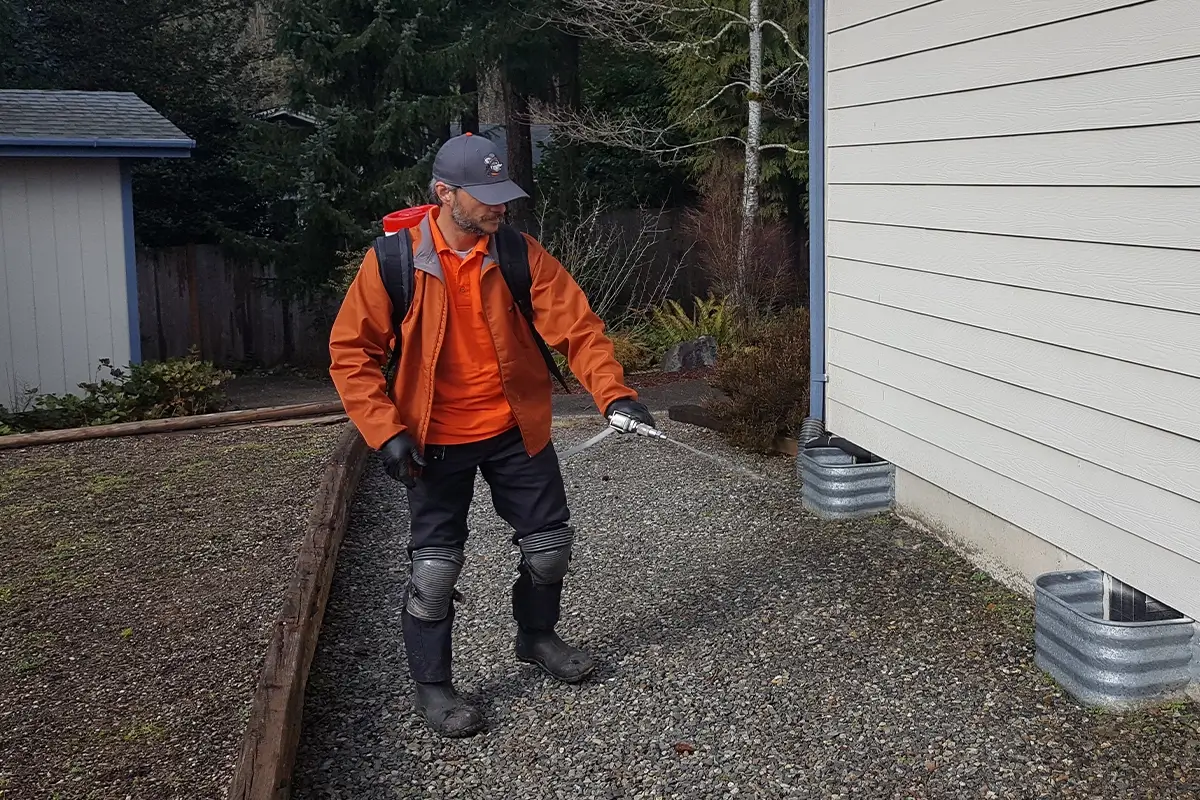
Ant Control Methods
Our ant control tactics vary based on the species of the ant and the conditions at your property. Often, we provide a double-band of protection around the exterior of your home in conjunction with strategic gel baiting for the interior. This resolves your current infestation and stops any new activity from arriving.
The combined baiting and double-band treatments will have a strong impact on the ant population within a few days, but we ask that you allow two weeks for the full effect of our treatment to take place. If activity persists, we will return within the warranty period at no additional cost and utilize even more of the tools and tactics in our arsenal to gain control of the infestation in a timely manner. Keep in mind that ant infestations can often develop over many months or years, and it may require multiple services before the issue is fully resolved. Due to ants often being a neighborhood issue, and the existing pheromone trails will still be present attracting ants back to your property, we will often recommend a recurring prevention program to ensure they do not return.
Ant Prevention Tips
Due to pheromone trails, ant infestations can occur year-round, and make your home a target for re-infestation. We will educate you on how to help resolve the problem quickly and make your home less appealing to pests, and we will inform you of other pest issues that you may be unaware of.










